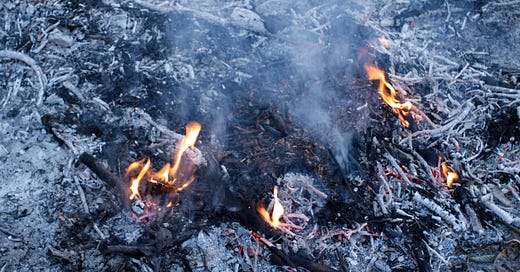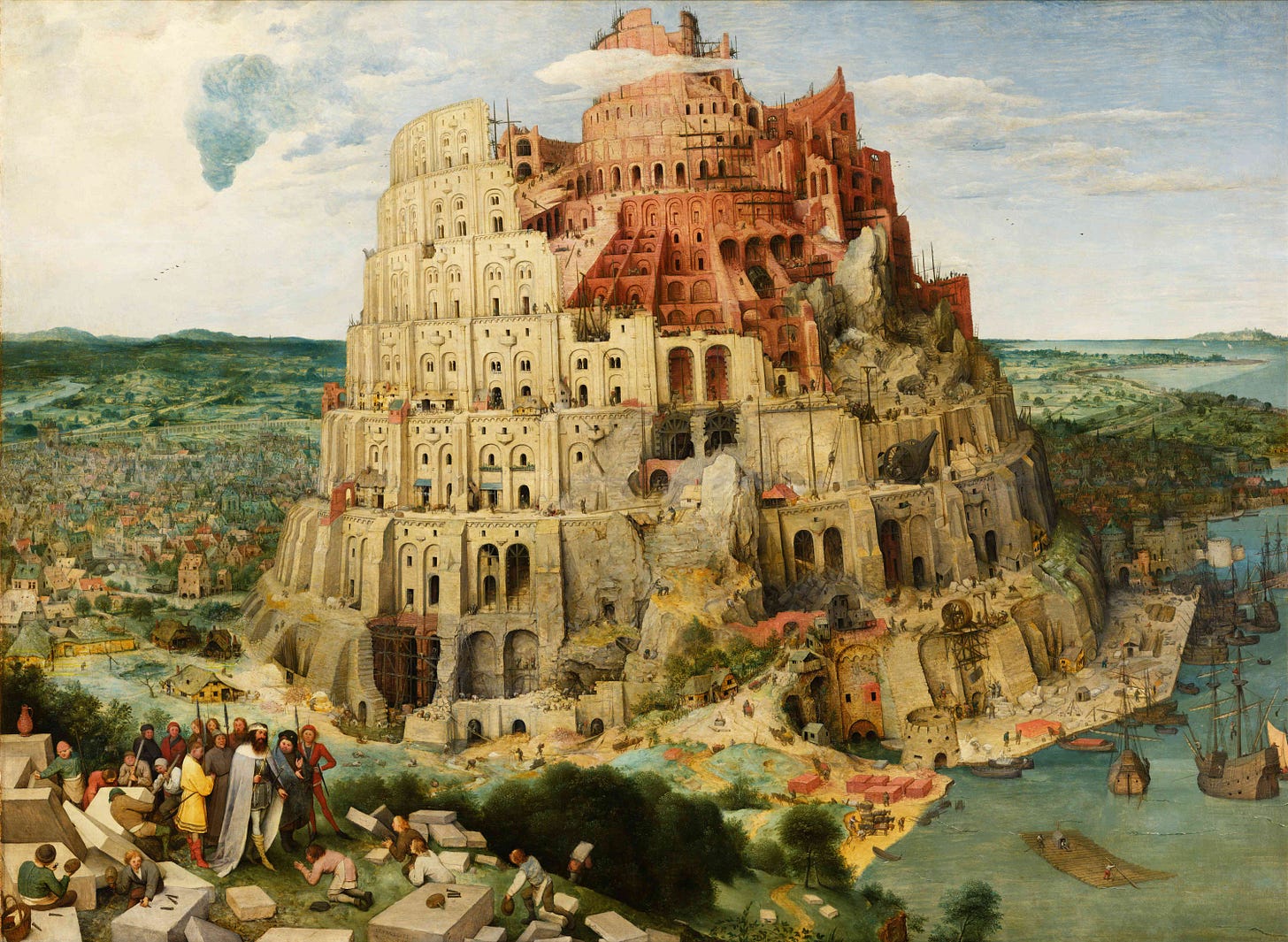Peter Carruthers
My aim in these articles is to set out a positive understanding of the earth, its future, and our relationship with it and its creatures, as an antidote to the dismal, pessimistic and anti-human tone that pervades much of contemporary environmentalism.
In the first article. I argued that the virtues of beauty, goodness and truth could be discerned in the thinking, writing and action of environmental pioneers and exemplars, from Wordsworth and the Romantics onwards, even though they did not approach things from an explicitly Christian viewpoint.
The second article showed how the accounts of creation in Genesis, in which we see humanity with the animals, working in the garden, and offering up worship to the Lord within and on behalf of Creation, provide three complementary environmental ethics, ie ‘companionship’, ‘stewardship’ and ‘priesthood’.1
The dark side of the earth
So far, we have majored on the good news, of a beautiful world created by God, which reflects His glory, and of a calling to humanity to care for it.
But it is not all good news. As our present environmental crisis makes abundantly clear, there is a dark side to our experience of nature. All is not as it was in the beginning.
Psalm 104 devotes 34 verses to celebrating the glory of God in creation, but ends with words “let sinners be consumed from the earth and the wicked be no more”. The writer is saying that the one thing that sullies the goodness of creation is bad people.
The Fall
Back to the garden. The idyllic account of God and the man and woman in the Garden of Eden ends sadly with the incident with the snake and the fruit.
As a result of their disobedience Adam and Eve are ejected from the garden and disharmony and distortion enter into relationships: between God and mankind; among people; and with and in Creation itself. This is known as the Fall.
Before the Fall, the first man and woman could freely eat of every tree in the garden, except two (Genesis 2:16-17). After the Fall, obtaining food becomes hard labour and a struggle against the ‘forces of nature ‘ (Genesis 3:17-19). And creation itself is changed: the ground is “cursed” (Genesis 2:17), and creation is “subjected to futility” (Romans 8:20). Nature may be peaceful, beautiful and bountiful, but there is also predation, parasitism, decay and death.
What is known as the Fall is actually one of three ‘falls’ recorded in the book of Genesis. At each, a corrupt heavenly being, or beings, play a role. In other words, sin is not just about human hubris, wilfulness and rebellion; there is also collusion with demonic beings. Each ‘fall, has a particular effect on, or implication for, the three dimensions of our relationship with the earth that we have drawn from the creation narratives.
The first fall in the Garden of Eden, in which Satan was instrumental, disrupts everything, but in our current environmental discourse, is particularly destructive of ‘stewardship’. As above, the work of tending and caring for the garden becomes thwarted by ‘thorns and thistles’, and mankind works by the ‘sweat of his brow’.
The second fall results in the Flood, which disrupts, I would argue, our ‘companionship’ with the animals. The ‘fallen angels’, the “sons of God” (Genesis 6:1-2) had come down previously and consorted with human females, eventually resulting in judgement on the earth. Whatever we might believe about the exact history behind the story, the symbolism suggests that before the Flood people were vegetarian, but after the flood the eating of animals was permitted and “fear and dread” of human beings came upon all the animals, birds and fish (Genesis 9:2-3).
The third fall occurs at the tower of Babel (Genesis 11:1-9). Here, the demonic element is implied rather than explicit. While most people would argue that the tower of Babel was built because mankind wanted to reach up to God, all the implications are is that it was a ziggurat structure designed to make contact with false gods, idols, demonic spirits. In that sense, again the demonic appears. And this disrupts ‘worship’, the third element of humanity's relationship with nature, because worship becomes redirected.2
Tower of Babel, c 1563, Pieter Brueghel the Elder
Commandments
In the books of the Bible that follow Genesis, we learn how, as a result of the ejection from the garden, humanity’s calling has to be shaped by commandments, including commandments to exercise restraint in the treatment of creation itself. Most notable among these are the Sabbath and Jubilee principles. The Law given to OT Israel made it possible to recover, in part, what was lost in Eden.
Although Christian environmental ethics emphasises the creation mandates (as in the previous article), the Law given to Israel is more ‘serviceable’ in framing environmental ethics for today. Israel was intended to be a ‘light to the nations’ and Israel’s land a microcosm of the earth (as Christopher Wright put it). We can, therefore, make constructive use of the detailed laws and institutions given to ancient Israel concerning the distribution and use of land in order to think and act biblically about economic and environmental ethics today.
Covenant breaking
Just as a right relationship between people and God, between neighbours, and between people and the land brings peace to creation itself, so the breaking of relationships brings sorrow into creation. Covenant breakers curse creation.
Hosea, in a recapitulation of the Fall, shows how the breaking of the covenant reverses creation itself, as the “land mourns” and the beasts, birds and fish are “taken away” (Hosea 4:1-3).
In an apocalyptic vision, Isaiah sees the “earth polluted under its inhabitants, because they had transgressed the laws” (Isaiah 24: 5). Even if we knew nothing about the science of environment and climate change, global pollution should not surprise us too much; it is what independent humanity in rebellion from God does.
The Cross
The ultimate effect of human sin is not, however, in ‘Man’s inhumanity to Man’, nor in humanity’s wasting creation, nor in the futility and enmity inherent in nature, but in the Crucifixion of Jesus. At the Cross, humanity who had laid waste to the creation, finally laid waste to the Creator Himself.
Yet the cross was not the end, but the beginning, the turning point. The world’s darkest hour was the darkest hour before the dawn.
Writing to the Colossians, Paul describes how, “it pleased the Father that in Him [Jesus] all the fullness should dwell and by Him to reconcile all things to Himself, by Him, whether things on earth or things in heaven, having made peace through the blood of His cross” (Colossians 1:19-20).
The Cross, therefore, is a sign of hope not only for us, but also for the earth itself.
First published in Village Link, Summer 2022
There is a ‘dark side’ to these trajectories. Companionship is based on creatureliness, ie humanity belongs to the earth. But this can (and does in some wings of contemporary environmentalism) regard people as a plague, virus or cancer on the earth and needing to be culled or eliminated). Dominion and stewardship can fall into a belief that earth belongs to humanity, and the earth and its creatures are there to be used and exploited as we wish. Worship and priesthood remind us that both humanity and the earth belong to the Lord, but this can lead to a type of passivity. All three are needed.
“Recall the ancient architecture of idolatry: a garden or temple built with an idol in the middle to trap and control the god. But when God made man, He built the worship architecture Himself and made man in His own image. So what the tower builders at Babel were doing was attempting to worship God in an idolatrous way, building their own temple in their own image to God, to sacrifice to Him the way people sacrifice to demons. They were inverting the pattern God had set up. This inversion was therefore a rebellion against God, who warns against attempting to reach up into heaven to bring him down (Deuteronomy 30:12; Romans 10:6). The tower was not a means of reaching God at all but rather of communing with and attempting to control demons. God cannot be controlled.” (A S Damick, 2021. Arise, O God, 58-59. Ancient Faith Publishing, Chesterton, Indiana.)





